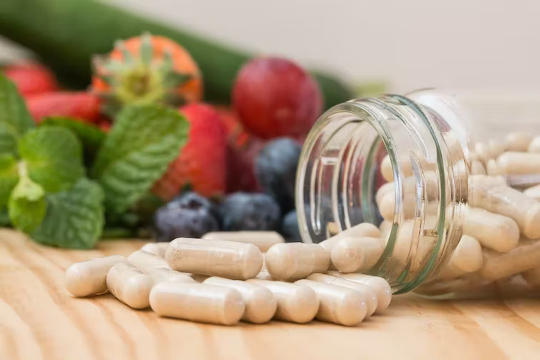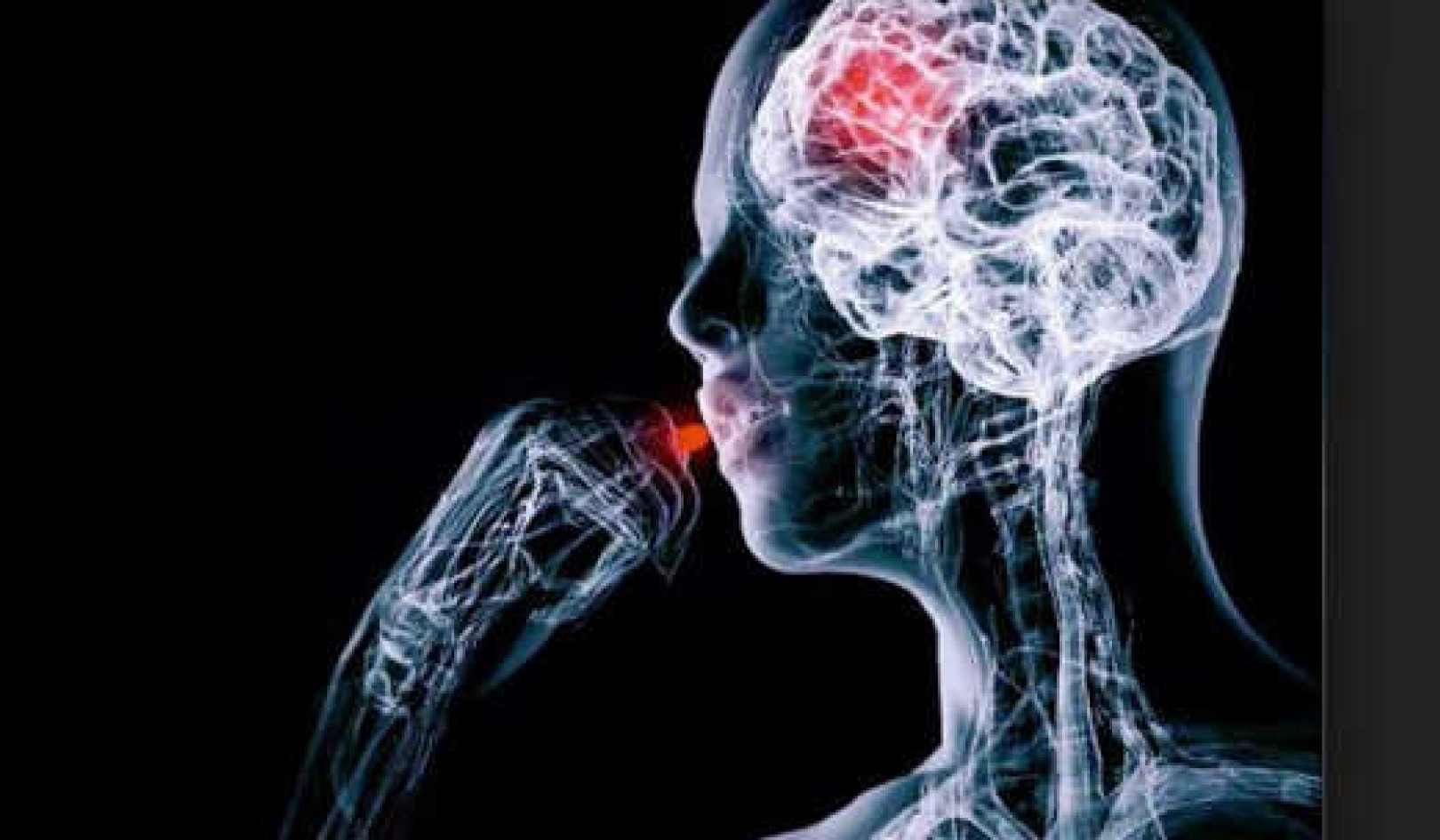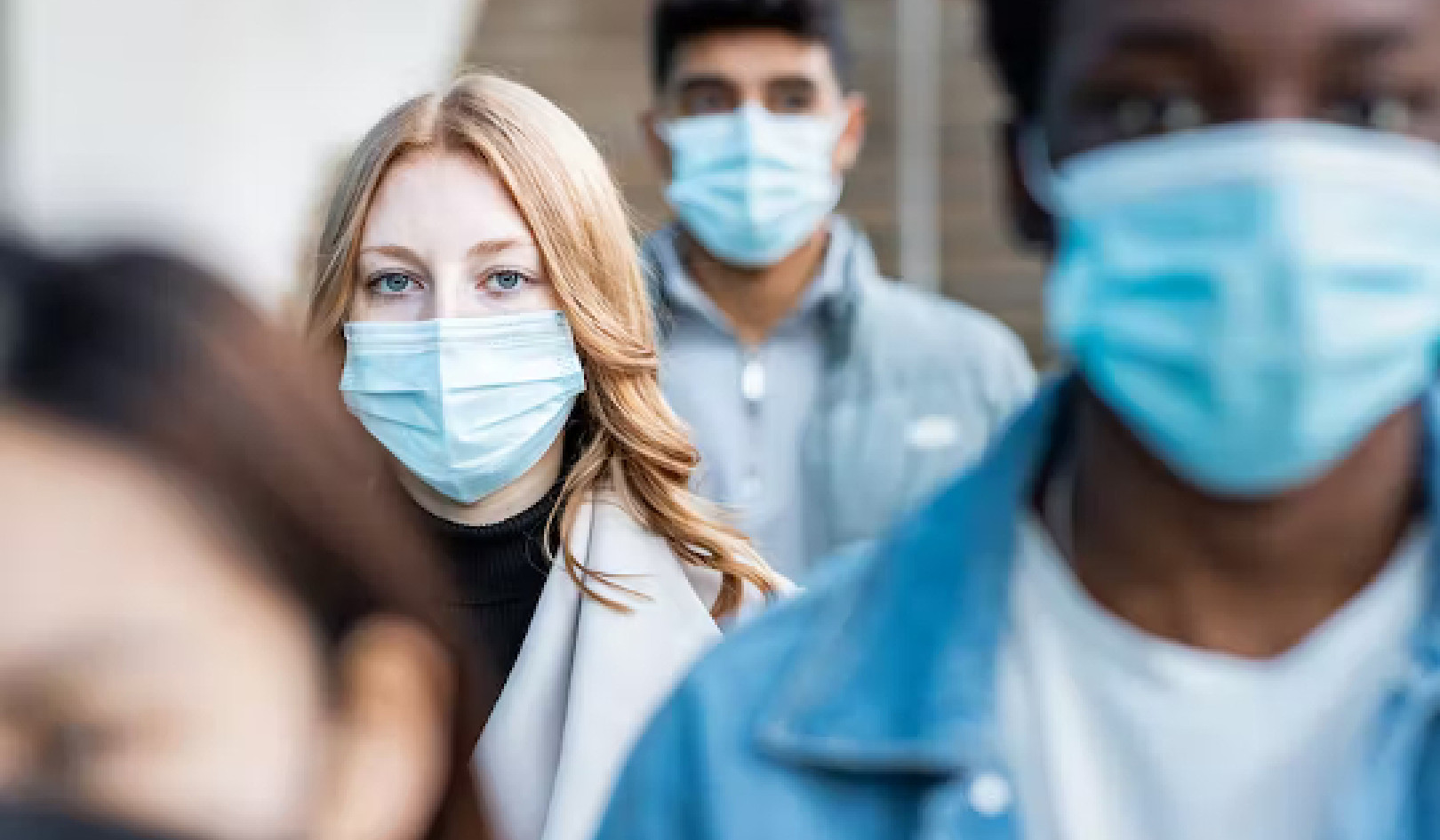
Supitcha McAdam/Shutterstock
If you were to open your medicine cabinet right now, there’s a fair chance that you’d find at least one bottle of vitamins alongside the painkillers, plasters and cough syrup.
After all, people are definitely buying vitamins: in 2020, the global market for complementary and alternative medicines, which includes multivitamin supplements, had an estimated value of US$82.27 billion. The use of natural health products such as minerals and amino acids has increased – and continues to rise, partly driven by consumers’ buying habits during the COVID-19 pandemic.
People sought out vitamins C and D, as well as zinc supplements, as potential preventive measures against the virus – even though the evidence for their efficacy was, and remains, inconclusive.
Multivitamins and mineral supplements are easily accessible to consumers. They are often marketed for their health claims and benefits – sometimes unsubstantiated. But their potential adverse effects are not always stated on the packaging.
Collectively, vitamins and minerals are known as micronutrients. They are essential elements needed for our bodies to function properly. Our bodies can only produce micronutrients in small amounts or not at all. We get the bulk of these nutrients from our diets.
People usually buy micronutrients to protect against disease or as dietary “insurance”, in case they are not getting sufficient quantities from their diets.
There’s a common perception that these supplements are harmless. But they can be dangerous at incorrect dosages. They provide a false sense of hope, pose a risk of drug interactions – and can delay more effective treatment.
Benefits
Vitamins are beneficial if taken for the correct reasons and as prescribed by your doctor. For example, folic acid supplementation in pregnant women has been shown to prevent neural tube defects. And individuals who reduce their intake of red meat without increasing legume consumption require a vitamin B6 supplement.
But a worrying trend is increasing among consumers: intravenous vitamin therapy, which is often punted by celebrities and social media marketing. Intravenous vitamins, nutrients and fluids are administered at pharmacies as well as beauty spas, and more recently “IV bars”. Users believe these treatments can quell a cold, slow the effects of ageing, brighten skin, fix a hangover or just make them feel well.
Intravenous vitamin therapy was previously only used in medical settings to help patients who could not swallow, needed fluid replacements or had an electrolyte imbalance.
However, the evidence to support other benefits of intravenous vitamin therapy is limited. No matter how you choose to get additional vitamins, there are risks.
Warning bells
Most consumers use multivitamins. But others take large doses of single nutrients, especially vitamin C, iron and calcium.
As lecturers in pharmacy practice, we think it’s important to highlight the potential adverse effects of commonly used vitamins and minerals:
-
Vitamin A/retinol is beneficial in maintaining good eye health. But it can cause toxicity if more than 300,000IU (units) is ingested. Chronic toxicity (hypervitaminosis) has been associated with doses higher than 10,000IU a day. Symptoms include liver impairment, loss of vision and intracranial hypertension. It can cause birth defects in pregnant women.
-
Vitamin B3 is beneficial for nervous and digestive system health. At moderate to high doses it can cause peripheral vasodilation (widening or dilating of the blood vessels at the extremities, such as the legs and arms), resulting in skin flushing, burning sensation, pruritis (itchiness of the skin) and hypotension (low blood pressure).
-
Vitamin B6 is essential for brain development and in ensuring that the immune system remains healthy. But it can result in damage to the peripheral nerves, such as those in the hands and feet (causing a sensation of numbness and often referred to as pins and needles) at doses over 200mg/daily.
-
Vitamin C is an antioxidant and assists in the repair of body tissue. Taken in high doses it can cause kidney stones and interactions with drugs, such as the oncology drugs doxorubicin, methotrexate, cisplatin and vincristine.
-
Vitamin D is essential for bone and teeth development. At high doses it can cause hypercalcaemia (calcium level in the blood is above normal) that results in thirst, excessive urination, seizures, coma and death.
-
Calcium is essential for bone health, but can cause constipation and gastric reflux. High doses can cause hypercalciuria (increased calcium in the urine), kidney stones and secondary hypoparathyroidism (underactive parathyroid gland). It can have drug interactions with zinc, magnesium and iron.
-
Magnesium is important for muscle and nerve functioning. At high doses it can cause diarrhoea, nausea and abdominal cramping, and can interact with tetracyclines (antibiotics).
-
Zinc can impair taste and smell, and doses over 80mg daily have been shown to have adverse prostate effects.
-
Selenium can cause hair and nail loss or brittleness, lesions of the skin and nervous system, skin rashes, fatigue and mood irritability at high doses.
-
Iron at 100-200mg/day can cause constipation, black faeces, black discoloration of teeth and abdominal pain.
Recommendations
People need to make informed decisions based on evidence before consuming health products.
Regular exercise and a well-balanced diet are more likely to do us good, as well as being lighter on the pocket.
Seeking advice from a healthcare professional before consuming supplements can reduce the risk of adverse effects.
Be aware of the potential adverse effects of vitamins and seek a healthcare professional’s guidance if you have symptoms.![]()
About The Authors
Neelaveni Padayachee, Senior Lecturer, Department of Pharmacy and Pharmacology, University of the Witwatersrand and Varsha Bangalee, Associate Professor, Pharmaceutical Sciences, University of KwaZulu-Natal
This article is republished from The Conversation under a Creative Commons license. Read the original article.
Related Books:
The Body Keeps the Score: Brain Mind and Body in the Healing of Trauma
by Bessel van der Kolk
This book explores the connections between trauma and physical and mental health, offering insights and strategies for healing and recovery.
Click for more info or to order
Breath: The New Science of a Lost Art
by James Nestor
This book explores the science and practice of breathing, offering insights and techniques for improving physical and mental health.
Click for more info or to order
The Plant Paradox: The Hidden Dangers in "Healthy" Foods That Cause Disease and Weight Gain
by Steven R. Gundry
This book explores the links between diet, health, and disease, offering insights and strategies for improving overall health and wellness.
Click for more info or to order
The Immunity Code: The New Paradigm for Real Health and Radical Anti-Aging
by Joel Greene
This book offers a new perspective on health and immunity, drawing on principles of epigenetics and offering insights and strategies for optimizing health and aging.
Click for more info or to order
The Complete Guide to Fasting: Heal Your Body Through Intermittent, Alternate-Day, and Extended Fasting
by Dr. Jason Fung and Jimmy Moore
This book explores the science and practice of fasting offering insights and strategies for improving overall health and wellness.























